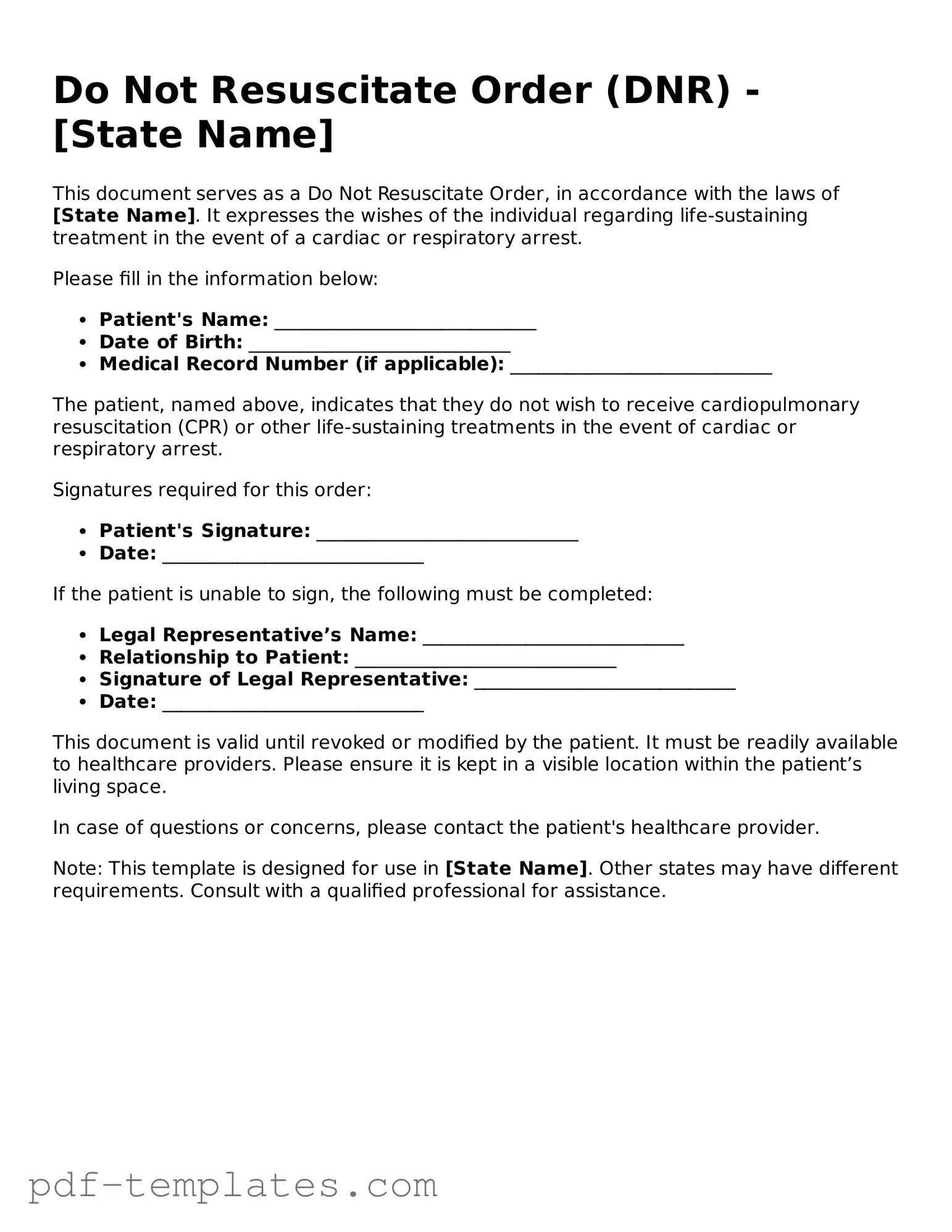A Living Will is a document that outlines an individual’s wishes regarding medical treatment in the event they become unable to communicate. Like a Do Not Resuscitate Order (DNR), it provides guidance to healthcare providers about what actions to take or avoid. Both documents focus on personal preferences for end-of-life care, ensuring that medical interventions align with the individual’s values and desires.
A Healthcare Proxy, also known as a Durable Power of Attorney for Healthcare, allows a person to designate someone else to make medical decisions on their behalf. Similar to a DNR, it emphasizes the importance of respecting a person's wishes regarding medical treatment. While a DNR specifically addresses resuscitation efforts, a Healthcare Proxy can cover a broader range of medical decisions, ensuring that an individual’s preferences are honored even if they cannot speak for themselves.
An Advance Directive is a comprehensive document that combines elements of both a Living Will and a Healthcare Proxy. It allows individuals to express their wishes for medical treatment and appoint someone to make decisions for them. Like a DNR, an Advance Directive serves to communicate a person’s values and preferences, helping healthcare providers understand what care is desired or refused in critical situations.
The Physician Orders for Life-Sustaining Treatment (POLST) form is another important document. It translates a patient’s wishes regarding life-sustaining treatments into actionable medical orders. Similar to a DNR, the POLST form is intended for individuals with serious illnesses or those who are nearing the end of life. It ensures that healthcare providers are aware of and respect the patient’s treatment preferences, particularly in emergency situations.
A Do Not Intubate (DNI) order is closely related to a DNR. While a DNR focuses on not performing cardiopulmonary resuscitation, a DNI specifically addresses the use of mechanical ventilation. Both documents express a patient’s desire to avoid certain aggressive medical interventions. They serve to clarify preferences in critical care scenarios, allowing individuals to maintain control over their medical treatment.
In addressing the critical aspects of emergency preparedness, it is essential for Californians to be informed about various resources available, including the All California Forms which provide vital information on insurance coverage options against earthquake damage, thereby reinforcing the significance of being ready for potential seismic events in the state.
Finally, a Mental Health Advance Directive allows individuals to outline their preferences for mental health treatment in case they become unable to make decisions. Like a DNR, it is designed to communicate specific wishes to healthcare providers. This document ensures that a person’s values and preferences regarding mental health care are respected, similar to how a DNR communicates preferences for physical health interventions.
